|
Internal Rate of Return |
Internal Rate of Return |
|
The internal rate of return is the determination by a graphical method for a given investment of the discount rate which produces a net present value of zero.
|
|
|
This is best illustrated by example.
|
|
|
Example
|
|
|
Calculate the Internal Rate of Return for each of the following three projects. On the basis of these calculations, which project is best?
|
|

|
|
|
Solution
|
|
|
For each project we need to calculate the Net Present Value at two different discount rates, preferably one that gives a positive value for the Net Present Value, and one that gives a negative value.
|
|
|
For Project A we will calculate the Net Present Value at discount rates of 10% and at 14%, as follows.
|
|
|
Project A at a discount rate of 10%
|
|
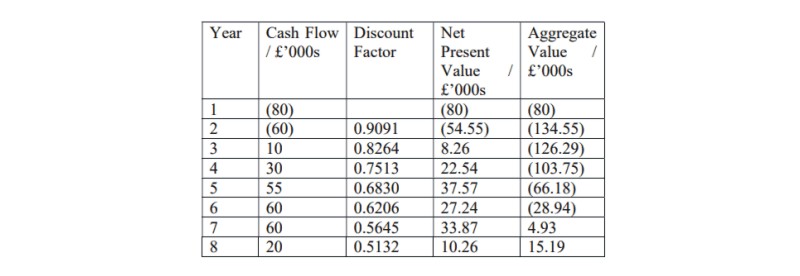
|
|
|
Project A at a discount rate of 14%
|
|

|
|
|
This gives us two values of the Net Present Value, at two different discount rates
|
|

|
|
|
This tells us that the Internal Rate of Return lies between 10% and 14%. To find a more accurate value, we construct a graph of the Rate of Return (horizontal axis) against the Net Present Value (vertical axis). We plot the points
|

|
|
|
on the graph. We draw the line joining these two points. Then the Internal Rate of Return will be that discount rate that gives a Net Present Value of zero — that is, the point where the line crosses the horizontal axis.
|
|
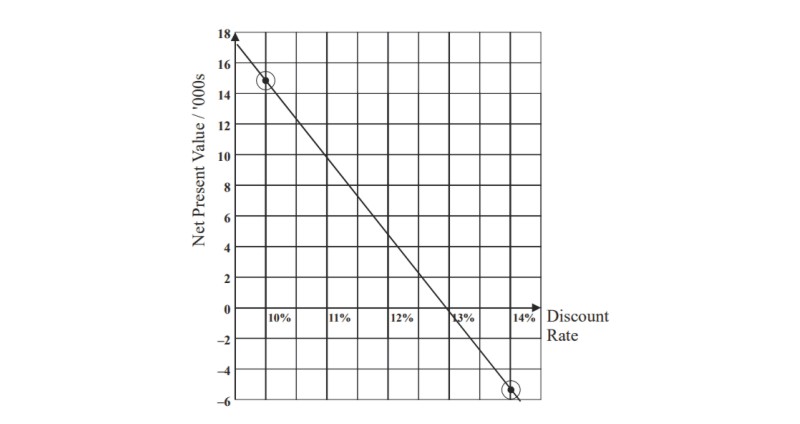
|
|
|
The Internal Rate of Return is 12.9% to the nearest 0.1%.
|
|
|
We now proceed to calculate the discount rate in the same way for the other two investments. We will calculate the net present value of this investment at 12% and 16%.
|
|
|
Project B at a discount rate of 12%
|
|
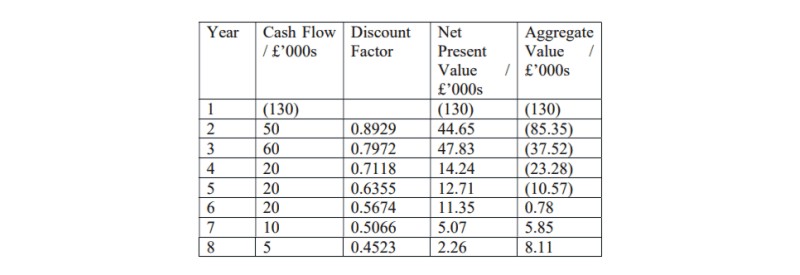
|
|
|
Project B at a discount rate of 16%
|
|
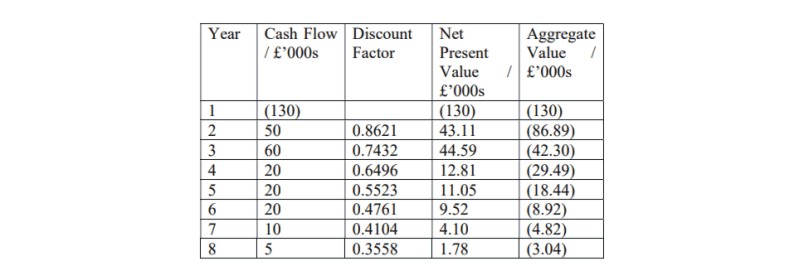
|
|
|
At 12% the net present value is £8,110 and at 16% the net present value is a loss of £3,040. So the internal rate of return lies between 12% and 16%.
|
|
|
By plotting the points on a graph we can determine a more accurate value for the net present value.
|
|
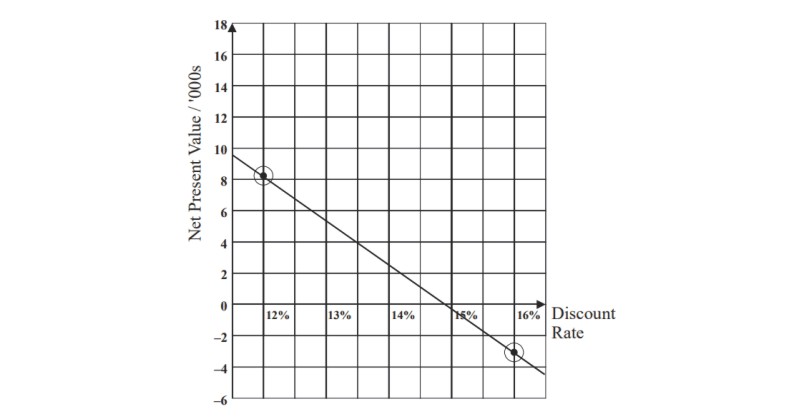
|
|
|
So the Internal Rate of Return is 14.9% to the nearest 0.1%.
|
|
|
For Project C we will find the net present values at 10% and 6%.
|
|
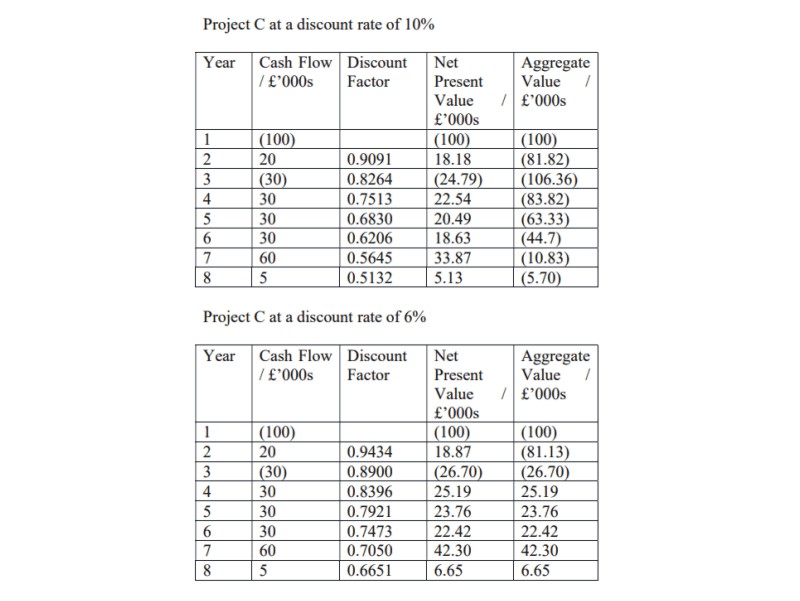
|
|
|
At 6% the net present value is £12,490 and at 10% the net present value is a loss of £5,700. So the internal rate of return lies between 6% and 10%.
|
|

|
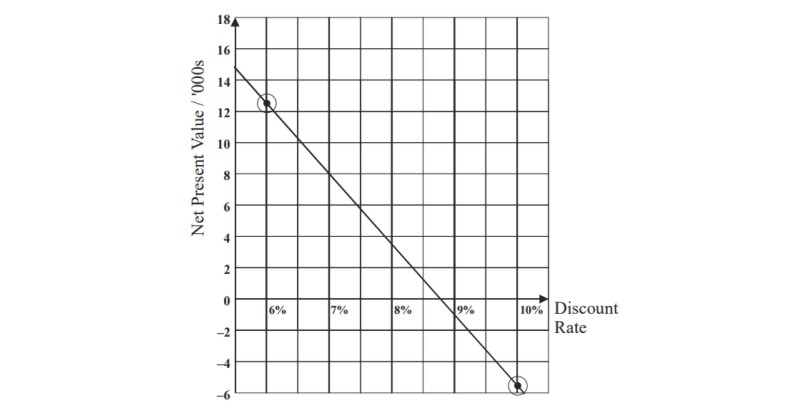
|
|
|
In summary
|
|

|
|
|
On the basis of these calculations, the best investment is Project B.
|
|